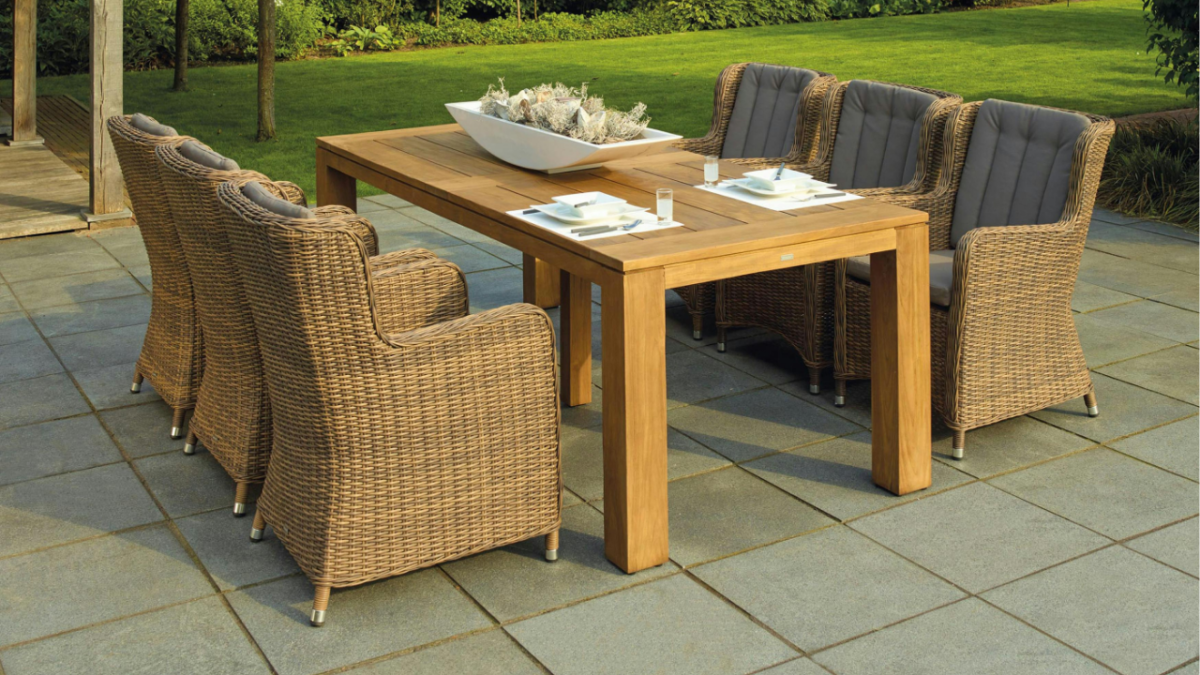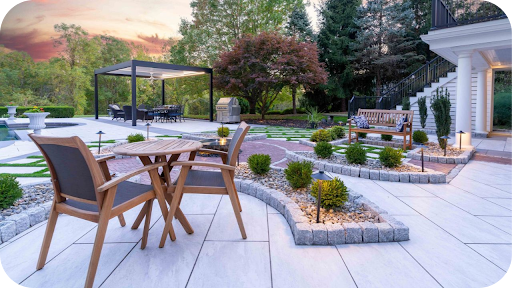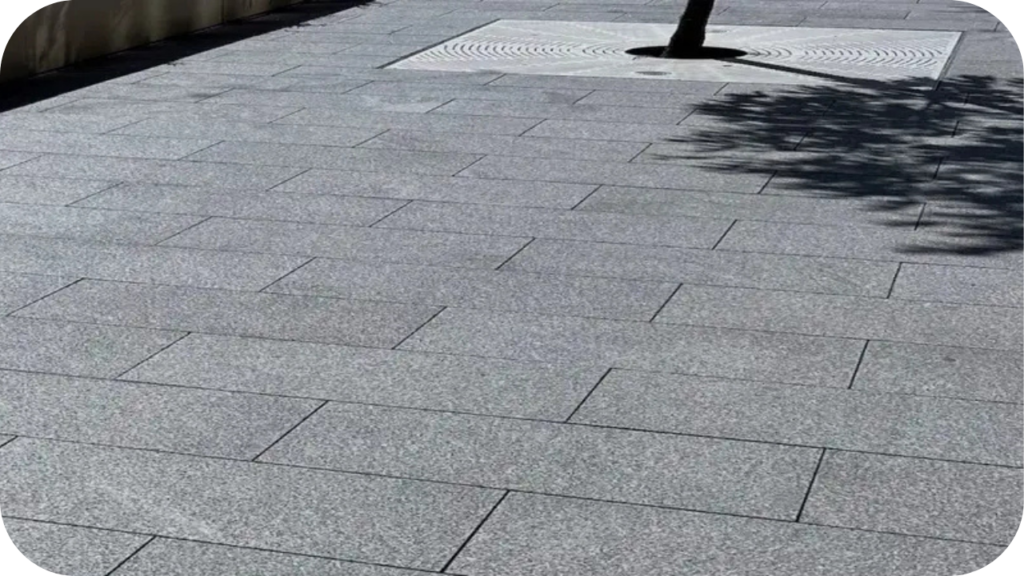Top 10 DIY Projects to Upgrade Your Backyard
More homeowners are paying attention to their outdoor spaces as backyards become important living areas. This shift highlights a desire for comfort, better use of space and inviting places to unwind.
Simple weekend projects can quickly improve how a backyard looks and feels. Small changes add structure, refresh garden zones and create areas that feel more enjoyable throughout the year.
This article walks you through 10 practical DIY projects that improve style, function and outdoor usability, with helpful guidance on using natural stone and other materials effectively.
Essential Tools and Materials for Backyard DIY Projects
The right tools and materials make backyard upgrades smoother, safer and far more enjoyable, especially when creating new pathways, garden features or paved zones. Here is what you need.
- Hand tools: Tape measure, spirit level, shovel, rake, hand trowel, rubber mallet, garden shears and a wheelbarrow for shifting soil, gravel and stones.
- Power tools: Angle grinder, circular saw, drill, outdoor-rated extension cord and a compact compactor for preparing bases and creating stable surfaces.
- Material choices: Natural stone, gravel, timber sleepers, treated posts, edging stones, outdoor-rated adhesives and pavers designed for landscaping conditions.
- Outdoor durability: UV stable materials, moisture-resistant products, weather-tolerant finishes and items designed to handle long-term exposure in Australian climates.
- Safety gear: Gloves, safety glasses, hearing protection, dust mask, enclosed shoes and knee pads to ensure safe and comfortable working conditions.
- Natural stone options: Limestone, bluestone, granite, or travertine for pathways, stepping pads, paved zones, and DIY walling projects that require durable, visually appealing finishes.
Practical DIY Ideas to Improve Your Outdoor Space

Creating a backyard that feels welcoming starts with practical upgrades you can complete in a weekend. These ideas add structure, style and comfort without requiring complex construction skills. Here is where to begin.
1. Create a Natural Stone Pathway
A stone pathway adds structure and guides movement through your garden. Options such as Euro Crazy or Crazy Porphyry offer textured finishes that sit naturally in outdoor spaces. With careful preparation, edging and planting, this project creates an inviting and durable garden feature.
2. Build a Feature Stone Fire Pit
A fire pit becomes a warm gathering spot that anchors your backyard. Stones like Hotham Granite or Charlotte Sandstone handle heat well and create a timeless look. Simple placement techniques supported by seating arrangements make this project comfortable and inviting throughout cooler evenings.
3. Install a Small Retaining Wall for Garden Beds
Retaining walls introduce depth and support garden beds. Varieties such as Jamieson Limestone or Beloka Limestone provide strong visual character and dependable structure. Correct height, drainage preparation and thoughtful planting ensure a stable feature that blends naturally with surrounding landscaping.
4. Lay a Paved Patio or Seating Area
A paved area forms a comfortable zone for dining or relaxing. Stones such as Silver Travertine or Loch Limestone create a refined finish that suits outdoor settings. Proper preparation, levelling and thoughtful styling help this space feel welcoming and practical throughout the year.
5. Create a Decorative Water Feature
A decorative water element adds softness and visual interest to your backyard. Stones like Beachport Quartz or Australiana Sandstone create attractive edges that frame the feature. Placing it with balanced sunlight and shade, supported by a simple pump, produces a calming focal point.
6. Build a Raised Vegetable or Herb Garden
Raised beds improve usability and support healthier plant growth. Edges built using stone, timber or metal create strong boundaries for soil and planting. Seasonal crops thrive with quality soil blends and consistent care, keeping your garden productive and visually tidy throughout the year.
7. Add Stone Stepping Pads for Outdoor Zones
Stepping pads create neat walkways without needing a full path. Stones such as Grey Granite or Sawn Bluestone offer durable surfaces that settle cleanly into lawn or gravel. Correct spacing and a prepared base help create a balanced and practical garden link.
8. Create a Backyard Entertaining Nook
An entertaining nook elevates outdoor living by creating a defined, comfortable zone. Paving choices like Charcoal Granite or Brooklyn Limestone establish a stable surface that pairs well with seating, planters and soft lighting. The result is a welcoming area for relaxed gatherings.
9. Build a Small Garden Wall or Divider
Garden walls introduce structure and help form outdoor zones. Stones such as Beloka Limestone or Hotham Granite deliver strong character and dependable support. Deciding between mortar or dry stack arrangements, paired with matching landscape elements, ensures a cohesive and refined finish.
10. Install Decorative Stone Features
Decorative stone pieces add instant visual impact. Choices like Crazy Porphyry or Euro Crazy create striking accents that suit pathways, garden beds and focal points. Proper stabilisation, supported by thoughtful planting and lighting, helps these features stand out in a balanced and natural way.
Tips for Choosing the Right Stones and Materials

Choosing the right materials shapes how well your backyard upgrades perform across changing weather, foot traffic and long-term use. These practical tips help you select stones and products confidently.
- Prioritise durability: Select stones suited to Australian conditions, such as limestone, bluestone, or granite. These materials maintain stability, resist weathering, and retain their appearance throughout continuous outdoor exposure.
- Match suitable colours: Choose tones that complement your home’s exterior and nearby landscaping. Lighter shades brighten shaded areas, while deeper tones introduce contrast and support bold visual structure in larger spaces.
- Understand stone qualities: Learn how limestone, bluestone, granite or travertine behaves outdoors. Each stone offers unique textures and characteristics that influence comfort, longevity and how well the material settles into your garden layout.
- Choose paving styles: Use crazy paving for natural, flowing garden shapes, and cut pavers when you want clean lines and structured paths that guide movement. Select a style that suits your backyard layout.
- Combine materials thoughtfully: Blend natural stone with gravel, timber or metal where helpful. Mixing materials increases visual interest and ensures each element matches its intended function and surrounding conditions.
Maintenance Tips to Keep Your Backyard Upgrade Looking New
Regular care supports long-lasting results and helps every outdoor improvement stay neat, stable and visually appealing. These are the routines that keep your upgraded spaces in good condition.
- Seal suitable stone: Apply breathable sealers only where recommended to protect surface quality, enhance longevity and maintain appearance without blocking the stone’s natural ability to manage moisture effectively.
- Clean seasonally: Wash surfaces, clear debris and refresh garden areas during each season. Regular cleaning prevents buildup, maintains visual appeal and keeps outdoor zones functioning well across changing weather conditions.
- Re-level and refill: Check pavers for slight shifts, settle any uneven areas and top up joints with suitable materials. This process maintains stability and prevents water from collecting in unwanted spots.
- Maintain garden growth: Prune plants, condition soil and remove weeds as needed. Consistent gardening supports healthy growth, keeps design elements visible and preserves the overall balance of your outdoor layout throughout the year.
- Protect outdoor furniture: Clean surfaces, treat timber when necessary and check for weather-related wear. Regular care preserves comfort, prevents fading and keeps your entertaining areas looking well presented throughout every season.
Final Thoughts: Building a Backyard You’ll Enjoy for Years
Creating a backyard you genuinely enjoy comes from choosing projects that add comfort, structure and everyday usefulness. Even small weekend upgrades can reshape how your outdoor spaces feel and how easily you move through them.
Natural stone plays a valuable role in lifting visual appeal and long-term performance, helping each project look more refined and cohesive.
If you are ready to upgrade your backyard with quality materials, explore our premium paving and walling at Splendour in Stone and start planning your next project today.






